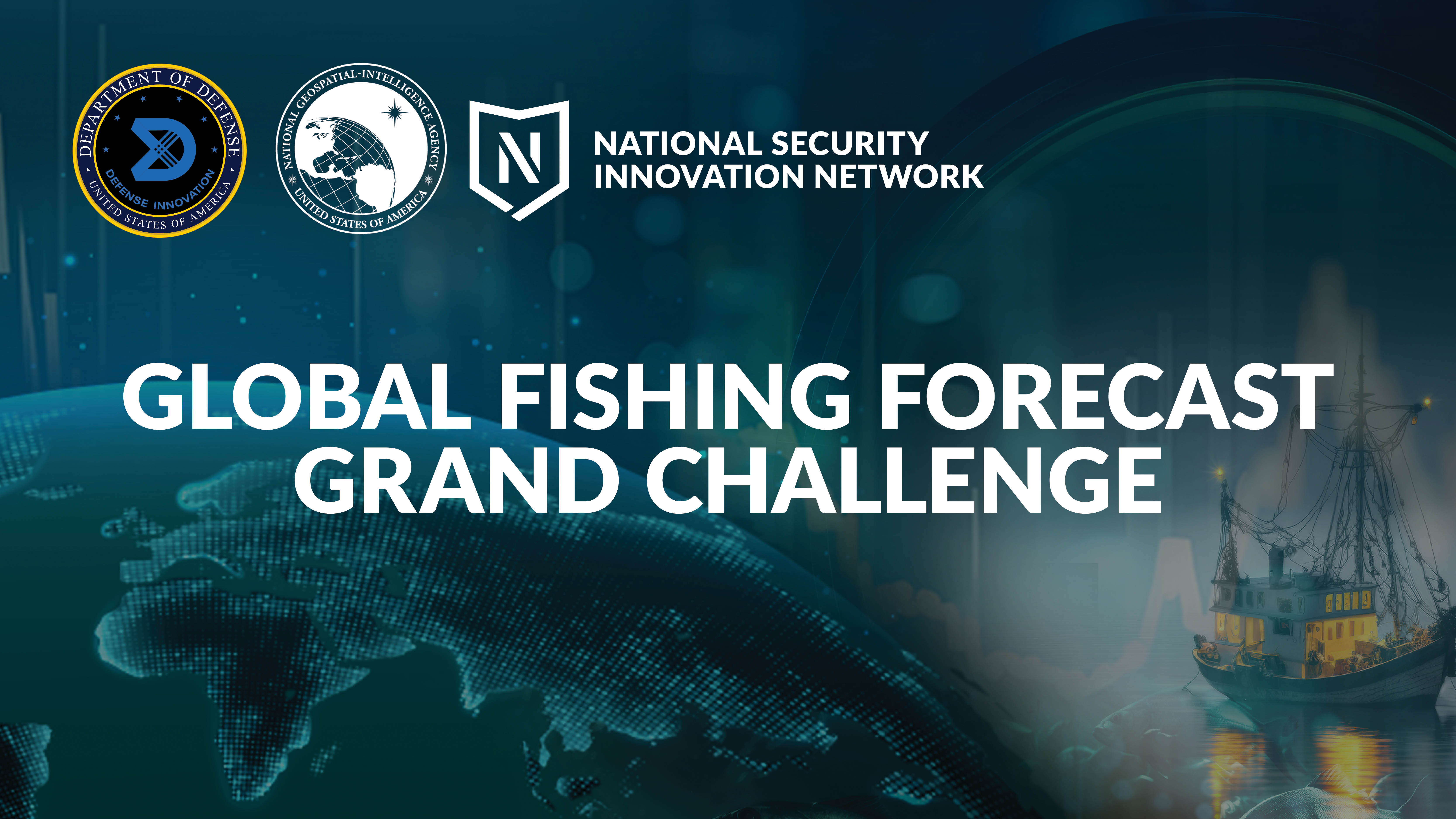
Athenium Takes Top Spot in NSIN and NGA Present: Global Fishing Forecast Grand Challenge

Athenium received the largest slice of the $1 million prize pool in the final round of the National Security Innovation Network (NSIN) and National Geospatial-Intelligence Agency (NGA) Present: Global Fishing Forecast Grand Challenge.
During the challenge, Athenium leveraged its geophysical data analytics capabilities to forecast industrial fishing by aggregating, rationalizing, and normalizing disparate datasets – including those from open-source and commercially-procured marine data, geospatial imagery, and vessel records – into a unified reporting platform. The company’s forecast is further refined by the inclusion of data on wave height, water oxygen content, net primary productivity, and tropical cyclone wind fields; all of which have an effect on fishing conditions.
Ultimately, Athenium believes that their iterative process gave them the edge with their Principal Atmospheric Scientist, Jonathan Fairman, Ph.D., explaining, “Since our forecast did not require time-consuming and computationally expensive machine learning training, we were able to, over the course of a few days, iteratively run several hundred forecast experiments with the new data to find a new set of parameters that optimized the forecast grading statistics. This adjustment work actually had a net benefit, as it inspired new ideas to make the forecast even more robust for the second round of the contest, which led to enhanced long-lead-time performance.”
The challenge occurred over a 6-month period and included eight weekly forecast attempts that spanned a concepts of operations (CONOPS) proposal round and a CONOPS pitch round.
In phase one, each team was scored based on 144 individual forecasts and a seven-member judging panel double-blind review of their written concepts of operations (CONOPS). The judging panel included representatives from NGA, NSIN, the U.S. Navy, the U.S. Coast Guard and the National Oceanic and Atmospheric Administration. The 10 finalists who were selected to move on to the Pitch Round were awarded $25,000 each along with contract eligibility.
In phase two, the overall winners were selected based on scores from 360 additional forecasts, another round of written CONOPS reviews, and a review of their verbal pitches. Athenium, Sync Layer, Inc., the second place winner, and Allen Institute for Artificial Intelligence (AI2), the third-place winner. These winners split the remainder of the $1 million with Sync Layer, Inc. receiving $200,000 and AI2 receiving $50,000.
“Given the $1 million prize pot, we wanted evidence of the ability to forecast,” said Michael Brady, Ph.D., NGA research scientist and program manager for the challenge. “We used standard measures to evaluate the forecast accuracy in terms of spatial footprint and intensity of fishing effort,” said Brady.
Sync Layer, Inc.’s model leverages automation, extensible data source processors, and modular algorithms, quickly fusing and analyzing vessel movement tracks from multiple data sources to inform fishing forecasts. The solution would provide a visualization to end-users, allowing them to quickly interpret the forecast and take action.
The third-place winner, the Allen Institute for Artificial Intelligence (AI2) presented its solution, which leveraged their artificial intelligence (AI)-enabled Skylight platform and an ensemble seasonal model, to forecast industrial fishing operations.
“We saw some promising CONOPS and forecasts in the challenge. The challenge winners’ forecasts outperformed the historical Global Fishing Watch baseline by up to 25%,” said Brady. “With regular feedback and refinements, these forecasts could be beneficial for operational uses in the future.”
The winning solutions show promise to help shift the analytic paradigm behind counter-IUU fishing operations from detection to anticipation.
“Anticipating maritime events such as potential illegal activity helps to coordinate space-based observing in the vast maritime domain,” added Brady.
About the Defense Innovation Unit
The Defense Innovation Unit (DIU) strengthens national security by accelerating the adoption of commercial technology in the Department of Defense and bolstering our allied and national security innovation bases. DIU partners with organizations across the DoD to rapidly prototype and field dual-use capabilities that solve operational challenges at speed and scale. With offices in Silicon Valley, Boston, Austin, Chicago and Washington, DC, DIU is the Department’s gateway to leading technology companies across the country.
About National Security Innovation Network
NSIN is a program office in the U.S. Department of Defense (DoD), nested within the Defense Innovation Unit (DIU). We are set up to collaborate with a wide variety of innovators to include universities, researchers, students, entrepreneurs and start-ups. We create opportunities for collaboration across communities and connect those that might not traditionally work in national security. Together, we help drive national security innovation and develop technologies that directly support the individuals responsible for protecting our country.
For more information or interview requests with Team NSIN, please contact us at media@nsin.mil.